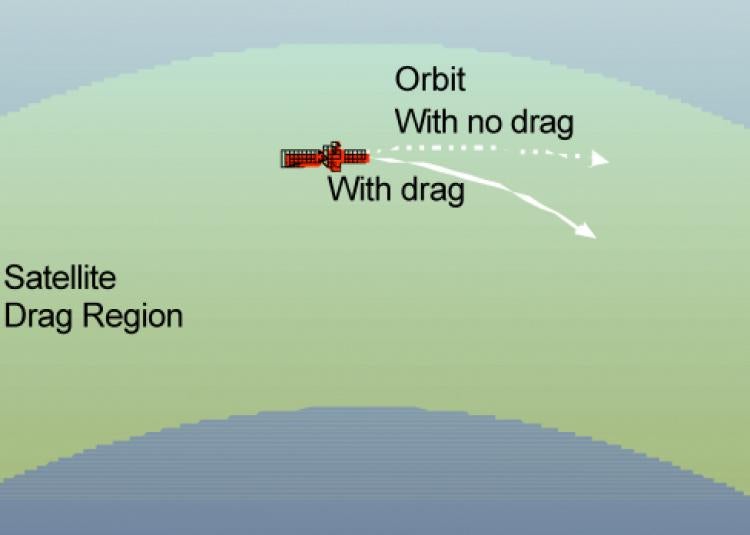 The amount of space debris has increased steadily since the launch of Sputnik in 1957, and about 22,000 man-made objects that are 10 cm or larger in diameter are currently cataloged and tracked in low Earth orbit (LEO) by the DoD's Joint Space Operations Center. The largest uncertainty in LEO orbit prediction is aerodynamic drag estimation. We are developing data assimilative approaches for specification and forecasting of thermospheric mass density using an ensemble Kalman filter in collaboration with NCAR. A promising research direction is the inference of thermospheric mass density from abundant plasma density observations through feedback between plasma and neutral variables incorporated in coupled thermosphere-ionosphere data assimilation. All the software to reproduce these research results has been available for community use.
The amount of space debris has increased steadily since the launch of Sputnik in 1957, and about 22,000 man-made objects that are 10 cm or larger in diameter are currently cataloged and tracked in low Earth orbit (LEO) by the DoD's Joint Space Operations Center. The largest uncertainty in LEO orbit prediction is aerodynamic drag estimation. We are developing data assimilative approaches for specification and forecasting of thermospheric mass density using an ensemble Kalman filter in collaboration with NCAR. A promising research direction is the inference of thermospheric mass density from abundant plasma density observations through feedback between plasma and neutral variables incorporated in coupled thermosphere-ionosphere data assimilation. All the software to reproduce these research results has been available for community use.
- Collaborators: NCAR
- Societal relevance: The Earth's upper atmosphere mass density variations are, among other factors such as neutral winds and drag coefficients, the major source of drag estimation errors at altitudes below about 700 km.
